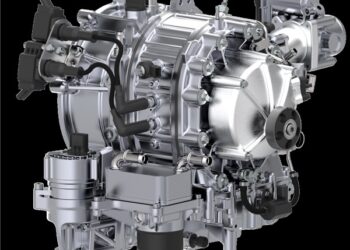In a bold move that could reshape the future of internal combustion engines, Porsche has patented a unique six-stroke engine design. Unlike the traditional four-stroke engines found in nearly all combustion-powered vehicles, this innovative system introduces extra compression and power strokes, potentially boosting both efficiency and performance.
For those unfamiliar with the mechanics of internal combustion engines, most operate on a four-stroke cycle: intake, compression, power, and exhaust. During the intake stroke, air and fuel are drawn into the cylinder. The compression stroke then pushes that mixture to the top of the cylinder, where it’s ignited to create the power stroke, forcing the piston down. Finally, the exhaust stroke expels the burned gases.
Porsche’s new design, however, adds a whole new layer to this process. Instead of stopping after the traditional four steps, this six-stroke engine includes an additional compression and power stroke between the standard power and exhaust phases. The concept involves two three-stroke sequences: intake-compression-power, followed by compression-power-exhaust.
Central to this design is a specialized crankshaft that operates on a ring with two concentric circles, referred to as an annulus. This mechanism shifts the piston’s movement during each stroke, creating a second “top-dead-center” and “bottom-dead-center” for the piston. In essence, the engine gets two opportunities for compression and power generation in every cycle, rather than just one.
Why go through all this trouble? The answer lies in the potential benefits: increased power and improved fuel efficiency. Traditional four-stroke engines only produce power during one out of every four strokes, but Porsche’s design could generate power during two out of every six strokes. Additionally, the extra strokes allow for a more complete burn of the fuel mixture, potentially increasing overall efficiency.
Of course, there’s a tradeoff: added complexity. The intricate crankshaft design and additional strokes could introduce more moving parts and increase the potential for mechanical issues. It’s also unclear whether the performance gains will be enough to justify the more complex system.
While this patent may never make it to mass production, it shows that Porsche is still dedicated to pushing the boundaries of combustion engine technology. At a time when electric power is dominating the automotive industry, Porsche’s six-stroke engine concept could be a sign that the combustion engine isn’t ready to fade away just yet.










